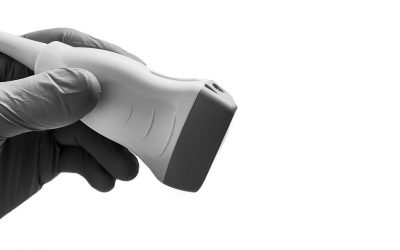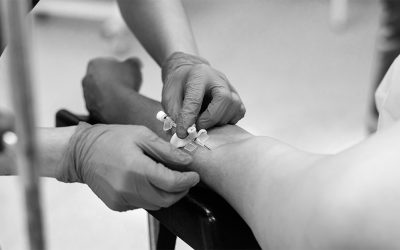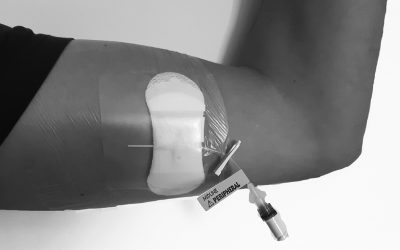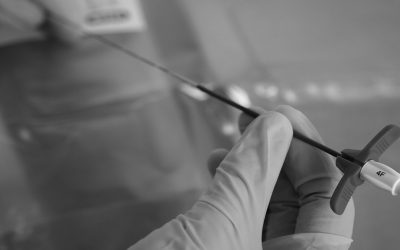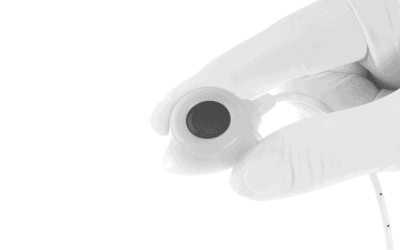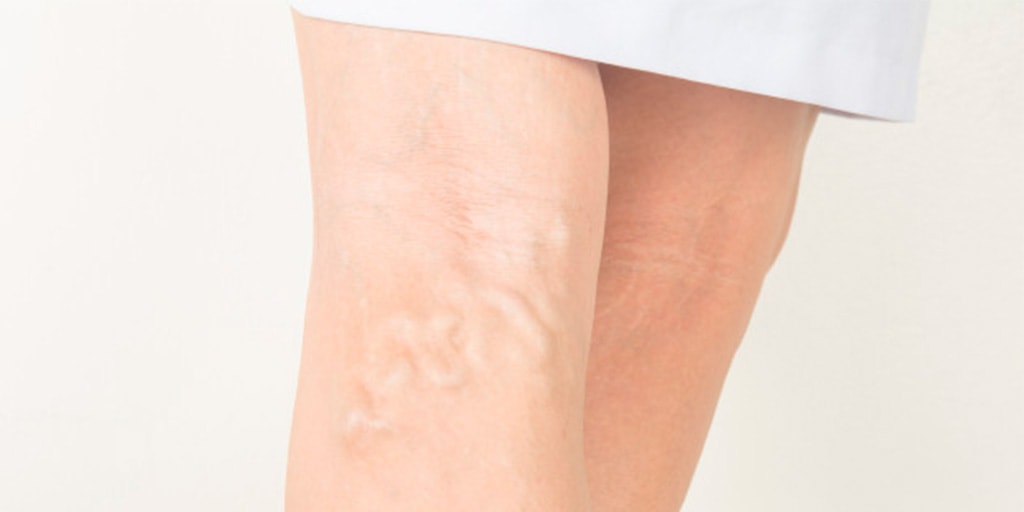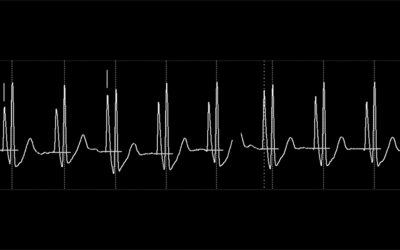The PERSEUS guidelines, recently released by the European Society of Anaesthesiology and Intensive Care (ESAIC), recommend a global use of ultrasound to assist all steps of central venous catheterization in order to minimize all immediate, early, and late...
Vascular Access
Ultrasound in the placement of PICCs and midlines
As the GAVeCeLT group (1) stated in their manual on PICCs and midlines regarding the evolution of PICC use, the introduction of ultrasound in the 2000s has been a breakthrough in the field. In this article, we delve into the utility of ultrasound in the field of...
CSSAS: Closed Safety Systems for Administration to Reduce Risks of Occupational Exposure to HMPs
Healthcare professionals handling chemotherapy for preparation and administration of HMPs are likely to be exposed to potential contamination risks associated with cytotoxic drugs. These risks can lead to health implications, ranging from minor issues like headaches,...
Introduction of ECG tip location into practice: A testimonial of Nicola Wyllie
This article discusses the implementation of electrocardiogram tip location (ECG TLS) for the confirmation of central venous catheter tip position. The author works within a nurse led vascular access service in NHS Scotland and has found that this method of catheter...
How is Vascular Access viewed and managed in France ? – An interview with Christian Dupont
Have you ever wondered how nursing works outside of your country? What protocols are used, how is the coordination between professionals, and how is patient follow-up conducted? Christian Dupont is a nurse at one of the major hospital centers in the French capital,...
“Right line at the right time”- a District General Hospitals perspective on the introduction of a nurse led midline service
Acute Cardiac Care Unit, Crosshouse Hospital, NHS Ayrshire & Arran, Scotland Within cardiology, there is a cohort of patients who require prolonged IV access, such as those with decompensated heart failure and those with infective endocarditis. Moreover,...
Everything you need to know about tunnelling in midlines
In ultrasound-guided procedures, it is possible that an ideal vein isn't found in the optimal catheter exit zone. When confronted with the decision between "immediate placement of a line out of necessity for the patient" and "waiting for potential alternatives,"...
Specificities of central venous access in paediatrics
A testimonial of Dr Eric Desruennes There aren't many differences between children over 2 years and adults. On the other hand, newborns, infants, and children under 2 years are quite different due to: - Their small weight and vessels, and sometimes the...
Addressing Pain During Neonatal PICC Placement
In neonatal care, the delicate nature of patients demands meticulous attention to every aspect of their well-being. The placement of a peripherally inserted central catheter (PICC) in neonates, while essential, presents a significant challenge due to the fragile and...
Ensuring optimal care for DIVA patients
The VAD (vascular access device) insertion experience varies between patients. For individuals with difficult intravenous access (DIVA), the process can become traumatic and notably painful. According to Blanco (2019), DIVA affects up to one-third of critically ill...
SIP-2 Protocol: Making PICC Insertions Easier
In modern healthcare, multiple professionals are responsible of inserting vascular access devices in patients. Within the same hospital, different categories of professionals end up using the same type of catheters. However, when each of these professionals employs...
Key good practice points to help prevent totally implanted vascular access device occlusion
One of the most common complications associated with vascular access devices (VAD) is occlusion. Device occlusion can potentially result in treatment being either halted or missed. This can have a negative effect on treatment outcomes. Occlusion can be partial,...
3 tips for proper PICC-port placement
PICC-port is gaining prominence as a primary vascular access device for oncology patients, surpassing traditional chest ports and outdated brachial ports. Dr. Bertoglio's recently published multicentre study, which examined over 4000 PICC-ports, demonstrates the...
What are the advantages of PICC-port?
PICC-port is an implanted catheter that is undoubtedly gaining ground in the world of vascular access. Its growing success is not surprising: it comes with new indications, cost reduction and patient satisfaction. Even if PICC-port has been in use for several decades,...
5 key advantages of midlines you should know of
Short Peripheral Intravenous Catheters (SPIVCs) are commonly used as default vascular access devices by practicians around the world for short and midterm therapies. However, they can be a problem in case of medium therapies as that would entail the insertion of...
Overview of anatomy and physiology related to vascular access: veins of the chest and neck
This article about chest and neck veins is part of a series about the anatomy and physiology related to vascular access. To read the first part about arm veins, click here. Chest and neck veins are often used for the insertion of acute central venous catheters (CVCs),...
6 measures to ensure the proper functioning of a PICC-port
Healthcare professionals working with oncology patients are used to handling fully implanted catheters. In recent years, PICC-port has proven to be very useful in the field. However, any vascular access device can become a problem if its placement has not been optimal...
Overview of anatomy and physiology related to vascular access: peripheral veins
VADs (Vascular Access Devices) can be inserted in various areas of the body via a selection of veins. Some venous access sites can result in more complications. It is therefore important to carefully select the vein for access. The purpose of this article is to detail...
Catheter to vein ratio: What are the recommendations?
With the introduction of venous mapping methods prior to the placement of a central venous catheter (RaPeVA, RaCeVA, and RaFeVA), the evolution of ultrasound techniques has given a fundamental role to the choice of vein. In fact, the measurement of this vein (obtained...
Extravasation: Causes and treatment
Extravasation can be defined as the accidental leakage of a chemotherapy infusion into the subcutaneous tissues, and exceptionally into the pleura or mediastinum. It can be an absolute therapeutic emergency depending on the product that was used. Of all the possible...
Implantable ports: Causes of dysfunction you should know about
Dysfunction with implantable ports is characterized by an absence of blood reflux. It can be associated to a decrease or loss of perfusion flow. Its incidence is of 0.6 to 2.5 per 1000 days/catheter. Causes are multiple. Etiologic diagnosis is essential because each...
Central venous catheters dysfunctions: diagnosis, causes and treatment
Central venous catheters are intravenous devices whose distal end must be located at the atrio cava junction (union of superior vena cava and right atrium). They allow the infusion of irritant drugs, with a pH < 5 or > 9 or hyperosmolar > 600 mosm/l, in...
Skin lesions in Vascular Access: Management and Prevention
Skin lesions include MARSIs and various intrinsic or clinical conditions that pose a challenge in maintaining adequate fixation of the central catheter on the patient's skin. Differences between skin lesions and MARSIs MARSIs are skin lesions due to medical...
Understanding the Concept of Vessel Health and Preservation
Introduction Vascular access is the commonest invasive procedure performed on hospitalised patients, but it is not without complications1. Complications can include phlebitis, localised infection, blood stream infection, thrombus, infiltration and extravasation, and...
Maintaining the patency of PICC catheters: 3 complications to be aware of
Ever since their creation, vascular access teams dedicated to PICC placement have proven to be efficient in reducing catheter-related complications. However, as Nancy Moureau commented in a clinical case on thrombosis in 2016, there are still complications that can...
Short Peripheral Intravenous Catheters (SPIVC) vs Extended Dwell Catheters (EDC)
Introduction The aim of this article is to describe and discuss some differences between the short peripheral intravenous catheter (SPIVC) and the long peripheral intravenous catheter (LPIVC) inserted using the Seldinger Technique. It will consider how these...
What is the meaning of symbols on medical devices labels?
On medical devices labels, manufacturers have to include the necessary information about the equipment that healthcare professionals are going to use for patient care. Provided on products’ batches or packaging, labels are an essential tool to identify the product and...
Mechanical complications of implantable ports – A testimonial of Dr Jean-Jacques Simon
The mechanical complications of an implantable port are numerous and frequent. However, they are often avoidable if the basic rules of insertion and use are known and respected. We can classify the causes of mechanical complications of ports as follows: - Catheter...
5 midline complications to know
The administration of drugs can give rise to problems such as phlebitis and extravasation among others, which can force us to use various peripheral routes. Over time, different devices have emerged, including midlines. Scientific evidence shows us that this class of...
Peripherally Inserted Central Catheters (PICCs): Best Practice
Peripherally Inserted Central Catheters (PICCs) (Part three) Best practice in PICC use: Troubleshooting common complications This article is part of a series about PICCs. To read part I about key principles of PICCs and part II about their safe use,...
The placement of PICC-ports by multidisciplinary teams – A Marta Rubio de las Cuevas interview
In recent years, PICC-ports have emerged as a safe, effective and comfortable option for the administration of medications to cancer patients. Another advantage of these devices over thoracic ports is that they are easier to place and result in fewer complications. To...
5 things to know about thrombosis in PICCs
In this article, we will address thrombosis in peripherally inserted central catheters (PICCs) based on the following aspects: incidence, causes, physiology, symptomatology, and prevention. What is thrombosis? Thrombosis is the formation of a clot in a vessel....
Peripherally Inserted Central Catheters (PICCs): The safe use
To refresh your memory and read the first part of the series about the key principles of PICCs, you can click here. The use of PICCs has increased in recent years and can now be found in many specialties and in both hospital and out of hospital settings....
Therapeutic Apheresis
We are currently witnessing an increase in the use of therapeutic apheresis (TA) with indications not only in oncohaematology, but also in nephrology, cardiology, dermatology, gastroenterology, rheumatology, neurology, metabolic diseases... The list of diseases with...
Administration of chemotherapy: what are the risks in the Oncology Day Hospital?
Too many patients attend the Oncology Day Hospital (ODH) services to receive their chemotherapy treatment. In an environment with a significant healthcare burden, nurses are also exposed to the danger of cytostatic drugs used in cancer treatments. I. CARE...
The Seldinger technique: when to use the classical or modified method
The evolution of the Seldinger technique since its development in the 1950s has allowed this method to be used with other types of vascular access devices and in fields outside of interventional radiology. In fact, initially known for the insertion of arterial and...
Peripherally inserted central catheters (PICCs): The key principles
Although Vascular Access Devices (VAD) have many advantages, the burden of harm associated with them is significant. It is now accepted that the presence of any VAD immediately places patients at risk of complications. They can occur in all devices including a PICC...
Midline catheter: placement and maintenance protocol
The midline catheter growth has been exponential since it is a resource that allows a notable improvement in the management of vascular access for medium-term treatments compatible with peripheral perfusion. Midline catheters must be placed by trained and specialised...
ZIM method and tunnelling in PICC placement
In Intravenous Therapy Teams, PICC placement using standard MST (Modified Seldinger Technique) is common practice and generally well controlled. However, complications can arise if the standard technique is applied, and the insertion site is unsuitable. Failure to...
Administration of antineoplastic drugs: a safety issue
The origin of intravenous therapies One of the greatest technological advances linked to medicine is intravenous therapies. At the forefront of these therapies are infusion pumps: devices that release specific amounts of food, blood, or medication directly into the...
Combining aesthetics and feasibility in PICC-port placement
Recommendations of Dr Diane Weber, Vascular Surgeon The clinical study on breast cancer patients has reported a very low incidence of PICC-port failure (2.6%), similar to the figures reported for chest-ports. (1) Therefore, PICC-ports are safe, and their use is...
Prevention of complications in PICCs: how to prevent obstruction
Maintenance of PICCs requires a set of washing and sealing procedures. However, what should be done if a PICC catheter is obstructed despite applying the protocols correctly? In this article, we will review the prevention and unclogging techniques used to maintain...
A safe axillary-subclavian venous access
Recommendations of Dr Jean-Jacques Simon, Vascular Surgeon The subclavian vein puncture, area of the axillary-subclavian junction, is known for its possible complications such as pinch-off syndrome and pneumothorax. These are perfectly avoidable when the...
Peripheral vascular access of elderly patients: what are the available options?
The data are unequivocal and indicate that we are heading towards an overall more elderly population. With a life expectancy in Europe of around 81.3 years and a reduction in the number of births, in the coming years, the population aged over 65 will have an important...
Combining aesthetics and feasibility in chest port placement
Recommendations of Dr Diane Weber Two years ago, I met Alicia, a breast cancer patient. After struggling with the disease for a while, she had to undergo a mastectomy. Soon after her surgery, a need for a chest port was identified. She came to me asking for an...
Acute Vascular Injuries during CICC placements
Photo 1: Case Report Introduction Central venous catheterization (CVC) is a technique commonly used to obtain short and long-term vascular access. There are many potential risks associated with CVC insertion and that can lead to vascular injuries....
The routes of vascular access device infections
Introduction The need for vascular access to administer intravenous medicines and fluids is an essential part of healthcare delivery in acutely ill patients.1 It is suggested that most patients admitted to acute hospitals will have at least one vascular access device...
PICC placement in patients with Atrial Fibrillation
According to the studies by Dr Pittiruti and Dr LaGreca Since the late 1980s, Dr Pittiruti and Dr LaGreca of the Fondazione Policlinico Universitario Agostino Gemelli in Rome have been researching the possibility of using ECG to locate the tip of a PICC. In 1989 (1),...
The varying terminology surrounding Midline Catheters
Introduction and Background Vascular Access Devices (VADs) are divided into two basic groupings, peripheral and central. The group delineation is determined, primarily, by the catheter tip termination position, rather that the insertion site. Peripheral...
Midline Catheter at home
This pandemic has confirmed a reality for us: hospitals are for acute patients. Although this is not new, we are now able to put it into action: now more than ever our home is our shelter. Home health care, specifically in the field of vascular access, IS feasible....
Peripheral Intravenous Catheters (PIVCs) versus Long Peripheral Catheters (LPCs) for Multi-day Intravenous (IV) Therapy: Current Evidence
Peripheral venous catheters Peripheral venous catheters can be divided into three groups: peripheral intravenous catheters (PIVCs); long peripheral catheters (LPCs); midline catheters (MCs). Each of them has specific characteristics: Peripheral intravenous...
Highlighting the Risks of Hazardous Drugs Contamination in Oncology Day Units
https://videopress.com/v/F8oiMcA3?preloadContent=metadata
Cutaneous Complications in Vascular Access: MARSI
If we consider the skin to be a shield, barrier or a protective layer, it is easy to understand why it is essential to maintain good skin integrity to avoid complications. Monitoring skin integrity is a nursing skill that is as important as any other, especially in...
Digital Sedation™ at the service of patients in a Vascular Access Unit
Before a surgical procedure such as a vascular access device placement, many patients are particularly anxious. To help relieve their anxiety, health facilities and surgical units give them the option of diving in virtual reality, with the help of a virtual reality...
When should I remove a PICC if it is infected?
An increasing number of hospitalised patients require the use of venous access devices (VADs). Intravenous therapy has therefore been a topic of high clinical relevance in recent decades. There are currently several types of catheters, and the choice between them...
What you need to know about infusors
What is an infusor? In recent decades, infusors have been used for continuous drug administration. The development of these devices is a major breakthrough in this field, as maintaining stable plasma concentrations allows better control of the disease and its...
Revised Standards of Practice for Vascular Access and Infusion Therapy
Due to the invasive nature of vascular access and infusion therapy, the potential for risk and complications associated with the specialty is high. Therefore, it is essential that competent, evidence based practice is ensured. It is crucial that clinicians involved...
How to locate the tip of a PICC
The reference guidelines on vascular access leave no doubt: it is essential to position and correctly locate the tip of a PICC. Otherwise, healthcare professionals risk encountering complications that can jeopardize the ongoing treatment and even the patient's health....
Complications in ports: pinch off syndrome
Ports, fully implanted venous devices, are the longest lasting vascular accesses and offer excellent performance in chronic ill patients, particularly oncological patients. However, the reservoir can lead to certain complications, some well known such as obstruction...
AFIC-VYGON Cancer Nurses Survey
Summary: Scientific studies show that the risks of exposure of healthcare workers lead to long-known side effects. The most recent recommendations and regulations strongly encourage the use of suitable PPE and safe closed systems, which significantly reduce the risk...
The PICC-port revolution
The PICC-port is the latest breakthrough in Venous Access Devices (VADs) and is now included in the DavExpert app's solution for patients. New studies are showing it is a safe, effective, efficient and goodlooking option for cancer patients. How has this device...
PICC Catheter: Choice of number of lumens and its impact on complications
Since its development in the 1970s1, the PICC catheter has become a commonly used venous access in adult and child patients because it is long-lasting, easy and quick to insert and has few complications. In the face of concerns about inappropriate use and the...
Short Peripheral Catheter: Four Common Problems
As nurses, do we know how invasive it is and what the consequences are of inserting a short peripheral catheter into a vein? In May/June 2015, the “Journal of Infusion Nursing” dedicated an article to short catheters that states: “The insertion of short peripheral...
The Patient Experience of Vascular Access: A Facebook Survey
INTRODUCTION The literature on the experiences of patients living with a CVAD suggests that the devices are accepted by patients, with the main attraction being a reduction of repeated painful cannulation (Yamada et al, 2010; Sharp et al, 2014; Alpenberg et al, 2015;...
Midline Catheters in Paediatrics
I. General Concepts The characteristics that define midline catheters are well established. However, in recent years a new group of peripheral vascular access devices has appeared on the market: long peripheral catheters (long peripheral IV catheters), also known as...


